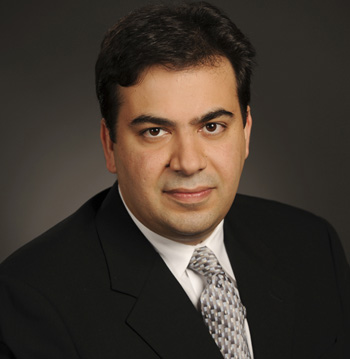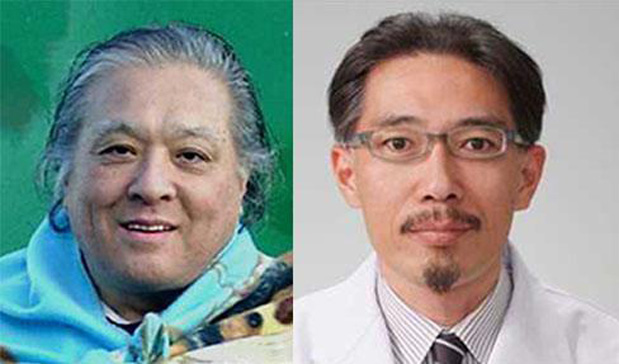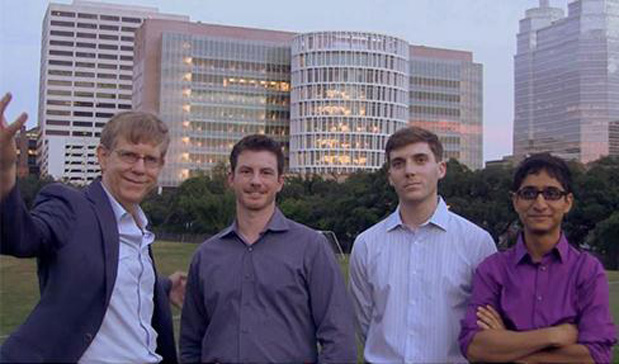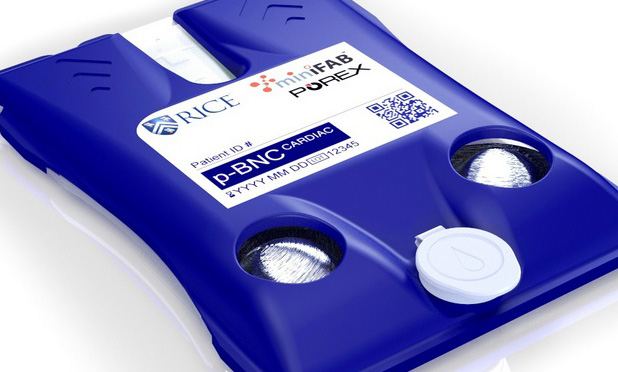John McDevitt, the Brown-Wiess Professor of Bioengineering and Chemistry at Rice University, thinks we are on the brink of a significant transformation in medical diagnostics—but it’s going to take some serious, committed research and engineering to make it happen.
“It’s very critical at the next stage to capitalize on some of these elements of standardization that have helped to make microelectronics scalable, that created all this amazing technology through Moore’s Law,” McDevitt says. But today’s diagnostic devices, he says, are often designed from scratch for a specific task. What may be needed, he suggests, is a kind of integration and standardization that might propel micro-diagnostic systems onto a kind of Moore’s Law trajectory of their own.
Among his many efforts directed toward bringing that vision to reality, McDevitt led one of the finalist teams in round one of the Nokia Sensing XChallenge, a two-year challenge to develop just these kinds of innovative diagnostic devices and systems.
The Nokia Sensing XChallenge, now gearing up for round two, was launched in 2012 as a way of promoting the creation of new diagnostic systems that would be portable, non-invasive, inexpensive, and simple to use. It aims to foster sensor systems that “could be used in many facets of health: to track the spread of disease, monitor our exposure to environmental factors, assess our mental state, and give us a complete picture of our state of being.” What’s more, according to the X-Prize Foundation, the organizers of the competition, the fact that such home-based monitoring could be continuous, or at least more frequent than conventional lab tests, could lead to important new insights into disease processes.
The competition will award a total of US$2.25 million over the course of two rounds, the first of which was completed in October 2013. (Registration for the second round closed on 15 February 2014, with final judging in July.) There is an array of research areas eligible for the challenge, and teams can choose to address any one of them, although multi-use devices, or ones that can easily be integrated with others, are highly encouraged.
The devices can cover virtually any health-relevant parameter, including biosensors that can detect specific compounds in a biological sample; imaging systems of all kinds (radiological, ultrasound, MRI, and so on); environmental monitors that could detect pathogens, allergens, or pollutants in air and water; motion-tracking to monitor physical activity and condition; behavioral monitoring; or physiological monitoring such as tracking vital signs.
After a careful screening process, twelve teams were selected as finalists in the “Challenge 1” round of the Nokia Sensing XChallenge. Among them were McDevitt’s Houston-based team, called Programmable-Bio-Nano-Chip; InSilixa, based in Sunnyvale, California; and ABUS-urodynamics, based in Hokkaido, Japan.
InSilixa Envisions Testing While You Shop

InSilixa, which was one of five teams that won a “Distinguished Award” in the Nokia challenge, is led by Iranian-born engineer Arjang Hassibi, who has a B.S. from the University of Tehran, Iran, and an M.S. and Ph.D. from Stanford University.
Hassibi, an IEEE Senior Member who has worked in the areas of biosensors and bioelectronics, biomedical electronics, and integrated circuit design, is aiming high with his team’s entry. His company is working on a multi-diagnostic system, using semiconductor-integrated DNA-sequencing technologies to create point-of-care diagnostics devices. The idea is to take advantage of “large-volume semiconductor technology,” manufacturing systems that are widely available and well established, to gain economies of scale, he says.
In addition to having been a finalist in the Nokia challenge, Hassibi’s team is also competing in the far more demanding Qualcomm Tricorder X-Prize competition, whose preliminary judging rounds begin in the fall of 2014. For that competition, the system will need to expand beyond its DNA sensing and add a variety of physiological monitoring functions, but even the simpler device entered in the Nokia challenge already carried a significant array of disease-detection capabilities.
Hassibi’s year-old startup company, called InSilixa, develops lab-on-a-chip devices, starting with a CMOS microarray chip using PCR for DNA sequencing. He maintains that new integrated, portable diagnostic systems such as those his company is pioneering “not only show that you can build biosensors this way, but you can also lower the cost, and produce better sensors” than some of those that are present standards.
The new biochips can take just a tiny drop of blood or saliva to perform an array of tests. “It’s all in a chip that’s disposable,” he says. “It’s so inexpensive, a few dollars, that it does the sensing and then you throw it away.”
Their concept is to use standard lab test reagents, the enzymes and other reactive materials that are used for today’s standard tests, to “make sure it is compatible, it’s the same chemicals that people are used to, and you get the same signal out of it. You don’t have to change anything.” That should also simplify the regulatory approval process.
But that’s just the beginning. “This is going to be a platform,” he says, that can develop to incorporate a wide variety of different sensor technologies. To start with, they will have detectors for “tests that are considered high-volume, like flu or STDs,” he says. Once the platform is in production, new test modules can be continuously added that would use the same platform.
He envisions shopping-center testing centers, where someone could stop in for a minute or two to get a test, go shopping for a while, and come back for the results. “That’s where you’re going to see the first use of these technologies,” he says. But it’s going to take some time, because big companies that would have the resources to develop such systems more rapidly “are much more conservative now,” so the innovations may come from small startups and from competitions like the Nokia Xchallenge. “The good news is, the will is there: People want it,” he says. “The question is, how much risk companies will take.”
But ultimately, Hassibi says, we are inevitably moving toward the kind of integrated, multipurpose, portable, inexpensive diagnostic system embodied in the Qualcomm Tricorder X-Prize, which is why his team is moving ahead with developing their entry. As he describes it, the goal of that competition “is not a product, it’s a vision of what needs to be built.” But that vision, with its potential of delivering better diagnostics, and thus better, more appropriate care to people at lower cost, is one he is determined to pursue. “If you want to see these things happen,” he says, “you’ve got to go out there and build it.”
ABUS-urodynamics aims to revolutionize urological clinical diagnosis

The team called ABUS-urodynamics, another competitor in the challenge, is also already out there building things. Based at Asahikawa Medical University, Hokkaido, Japan, the Nokia challenge team is led by Yasuhito Takeuchi, who holds an M.S. and a Ph.D. in electronic engineering from Tohoku University.
Takeuchi is part of the study instrumentation group at Asahikawa Medical University’s urologic surgery department, where working with Seji Matsumoto, he has developed a real time, remote contact-less measurement system for bladder pressure using a tiny wireless capsule telemetry device. They have also tested the device to measure cardiographic signals in animals and are planning human trials.
Takeuchi has a background as R&D engineer for several companies, including Yokogawa Electric Works and GE-Yokogawa Medical Systems, where he was R&D manager for medical ultrasound engineering. He is now retired after serving more than a decade as a Professor of Information and Computer Science at Kagoshima University. His research has included medical electronics, medical ultrasound, monitoring, and remote sensing with biotelemetry.
“We’re excited for this international, cross-discipline competition to help validate our innovative R&D activities in biomedical instrumentation,” he said upon his team’s selection as a Nokia challenge finalist.
“Our latest wearable finger-mounted pre-clinical device” he says, “will revolutionize urological clinical diagnosis as well as patient-managed health checks,” using the patient’s own tablet or smartphone or online system to track measurements and provide some analysis. “We are concentrating on our proprietary detection and signal processing technology, which will work with today’s available signal or data transmission and archiving technology,” he says.
Programmable BioNanoChip aims for full-scale diagnostic integration

Meanwhile, John McDevitt, leader of the Programmable BioNanoChip (PBNC) team, is aiming for full-scale integration of every kind of diagnostic capability. He sees technology as being poised at the very brink of a major change in the way diagnostic information is gathered and interpreted.
McDevitt has been a pioneer in the development of programmable bionanochip technologies. As a professor at Rice University in Houston, Texas, since 2009, McDevitt and his group have focused on developing portable diagnostic devices that could replace expensive lab-based diagnostic tests. They aim to target both resource-scarce settings where traditional laboratory measurements are not practical as well as developed countries looking to reduce health care costs.
The PBNC concept is a standardized module that could be adapted to any of a whole suite of tests—essentially anything that can be done using an input for one tiny sample, onboard storage for a number of reagents, and some kind of optical or electrical readout system. The modules would be low-cost, mostly single-use items, while the readers could come in a few different configurations for different applications.
They have focused on the fact that while a wide array of new materials and devices are being developed for diagnostic purposes, they are mostly one-off designs targeted to a single function such as glucose measurements for diabetics, or for a narrow range of functions, such as testing for a range of allergens. By creating a standardized platform for what they call a “microfluidic tool kit,” they hope to encourage others to develop new functions for a set of standardized data recording and logging systems.
One of their first applications is a set of rugged, portable drug-testing systems being developed for the government of the United Kingdom. The idea is to have a simple device that could be carried in a police squad car, similar to a breathalyzer, that could be used to test non-invasively for a multitude of different drugs. The person would simply spit into a small vial, and the fluid would be processed through a micro-array of detector compounds, producing a rapid readout on the spot. The challenge was to get high-viscosity saliva to work in a microfluidic device, which would ordinarily become clogged immediately, but the team did figure out a proprietary solution.
The same essential technology could be applied to a portable unit for HIV testing in off-the-grid villages in Africa, McDevitt says. In that case, rather than designed to operate off a car’s 12-volt system, it might be powered by solar panels. “It might need to go on a motorcycle, or to operate in the hot sun,” he says.
In a different setting, such as a unit in a dentist’s office designed to carry out screenings for oral cancer, the unit would be designed as a plug-in system and with surfaces that are easy to keep sterile.
By having all these units designed around a standard size, standard interface module containing the specific microfluidic channels, control systems, and reagents needed for a particular set of tests, the hope is that significant economies would result. McDevitt sees the implementation of an early set of standards and connectors in the early days of the semiconductor industry as having played a key part in that explosion of technological innovation, and he thinks the same thing is possible in the biomedical arena. “Standardization is the key to scalability,” he says.
Though it was only a small step in the long path toward his vision, McDevitt says the Nokia Sensing XChallenge provided a helpful bit of momentum in this daunting endeavor. “For us it was an incentive to pull the pieces together,” he says. “It also provided additional visibility,” he says, not only for his team but for the whole burgeoning arena of new diagnostics.
“There’s a tightly knit ecosystem of manufacturers and distributors and component suppliers that we plan to leverage as we move through the next steps,” he says. “We’ve spent a decade learning how to do non-invasive testing.” And now, the pieces of the puzzle are beginning to fall into place.
Ultimately, such simple, low-cost devices could end up “in people’s homes, in the hospital, in the ambulance,” he says, and potentially replace a variety of separate single-purpose devices. And that, he hopes, “provides more options for consumer-based diagnostic testing.” In short, giving people more control over their own health information, and their own decisions.
Want to learn more?
Read more about the Nokia Sensing X-Prize and finalists here.



